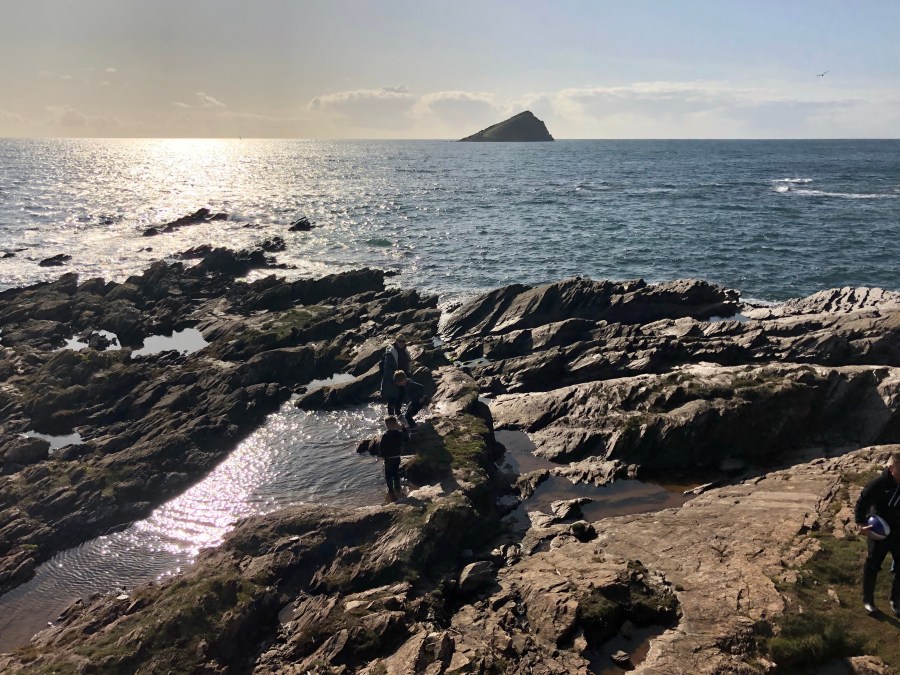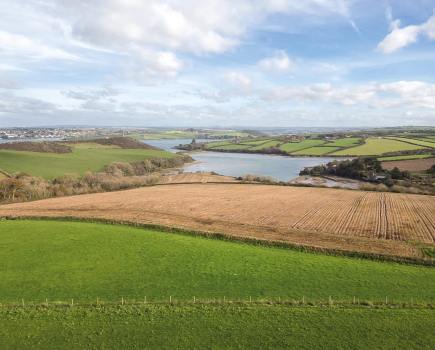The UK coast is rich with treasures from the deep that wash up on shore with each retreating tide, discovers ALEX GREEN, as she embarks on a coastal treasure hunt.
A shoreline walk and coastal treasure hunt is full of fascinating finds that reveal a bit more about what lies beneath the waves, or beyond the horizon. Like a message in a bottle, these hidden treasures can tell a story of a different time and place, enriching our understanding of the world and our place within it.
It’s also good for the soul. Spending time by the water, breathing in the fresh sea air and taking in the spectacular coastal scenery – all have well known health benefits.
Whether you have a penchant for pebbles, a soft spot for collecting shells and sea glass, or you simply love seaweed, there be treasure to be found on these here shores.
Here are five of the best shoreline walks where you can set your inner Womble free:
Robin Hood’s Bay, Yorkshire – best for semi-precious gems
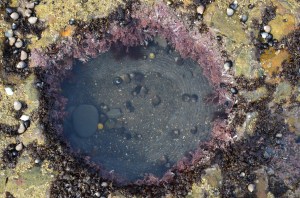
The Yorkshire coast between Whitby and Ravenscar is a rewarding walk where various beaches connect at low tide around Robin Hood’s Bay. Once the preserve of smugglers who landed their cargo in the secluded coves and scurried it away through the tunnels that lead to town, it’s now a popular spot for beachcombing, especially after a storm.
With the additional force of strong tides depositing the goods, you’ll find shells, giant seaweed, ammonites and Whitby Jet along the strandline. The latter is considered a semi-previous stone and is prevalent in these parts. It’s formed from tree deposits believed to be around 200 million years old. nationaltrust.org.uk/visit/yorkshire/yorkshire-coast
Norfolk coast – best for shark’s teeth

Miles of beach and soft layers of chalk cliffs make the Norfolk coastline a beachcomber’s paradise. At one end, West Runton Beach reveals rockpools crawling with crabs and critters, while at the west-facing Hunstanton Beach you can find the fossils of coccoliths, bivalves, belemnites and sometimes even shark’s teeth, which fall out of the crumbling rocks.
The red and white-striped cliff face consists of a layer of chalk on top, containing the remains of marine life that once swam in a tropical sea covering Norfolk between 135 and 70 million years ago in the Cretaceous period. The bottom layer is made of red carrstone, a chalk mixed with Iron pigments, and is considered around 108 million years old. Keep a safe distance from the base of the cliffs when searching for treasure. benorfolk.co.uk/activities/chalk-and-fossils
Award-winning beaches along our coast
Charmouth Beach, west Dorset – best for ammonites
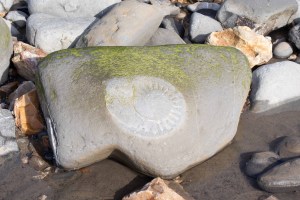
Ammonites are aplenty on the Jurassic Coast World Heritage Site at Charmouth. There’s a good chance of finding them on the beach and if all else fails, you can certainly see them on display in Charmouth Heritage Centre alongside fossils found by local collectors and visitors, including the Jurassic dinosaur. This free exhibition space runs guided fossil hunting walks where you can take home your finds.
The Jurassic Coast is one of the richest sites in the world for prehistoric remains. However, in some places along the 95 miles of this protected landscape, fossil collecting is not permitted due to the fragile nature of this ever-changing coastline. It is allowed along the stretch of coast between Lyme Regis and Charmouth, where it’s also much safer for beginners. charmouth.org
Branscombe, east Devon – best for hag stones
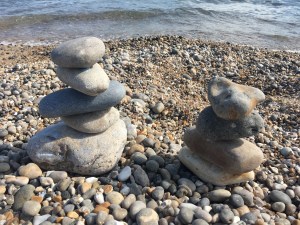
Storms bring with them a tideline full of natural treasures, yet the flotsam and jetsam from shipwrecks and seafarers can sometimes throw up a few surprises. The MSC Napoli shipwreck disaster at Branscombe Beach in January 2007 proved devastating for wildlife, while looters grabbed some of the most valuable booty lost at sea in recent history, from brand new motorbikes to oil paintings.
Fortunately today, wildlife has returned and you’re far more likely to find starfish, jellyfish, or a mermaid’s purse (an egg case of a skate or ray) than a motorbike on this shingle beach. The pebbles also have some hidden gems among them. According to folklore, if you find one that has a natural hole through its centre, known as a hag stone, it has magical properties. It’s believed they can ward off witches and provide a portal to fairyland. nationaltrust.org.uk/visit/devon/branscombe
Wembury, south Devon – best for corals
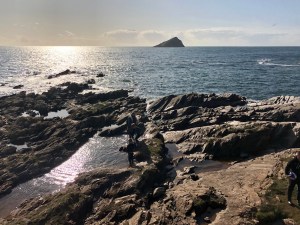
Wembury is a treasure trove of marine life lurking within the rockpools that form at low tide. It’s a rocky beach with huge wave-cut platforms and slate reefs that require some scrambling to explore between the cliffs and the foreshore. A guide to what you can find is available from Wembury Marine Centre (open from Easter to October), where you can join a rockpool ramble organised by Devon Wildlife Trust.
Look out for blennies, crabs, sea urchins and starfish, as well as the Crown Jewels of the rockpool, anemones and corals. It’s a voluntary Marine Conservation Area and a Site of Special Scientific Interest with a Seashore Code that visitors are asked to follow here, or wherever they go rockpooling, to protect the plants and animals that live in them. wemburymarinecentre.org
TOP BEACHCOMBING TIPS FOR BEGINNERS
- Find out about the beach you’re planning to visit. Is it a pebble beach or sandy? Are there large boulders for scrambling or rockpools for rambling? Depending on the geology, there may be interesting things to see in the rock face but heed warning signs and where there’s a risk of cliff falls, do not walk beneath them.
- Check the tide times. If the beach is completely covered at high tide there’ll be no tideline to explore. Many beaches are transformed at different times of the tide, so being aware will make sure you’re better prepared. Knowing that rockpools emerge at low tide for example, or even barnacled shipwrecks, will give you an idea of what to look out for.
- Wear appropriate footwear. Walking on pebble beaches can be surprisingly strenuous and is made more difficult if you need to stop to empty stones out from your shoes often. Similarly, walking on wet sand might be easier in sandals, or better still, barefoot.
- Don’t be greedy. If you want to take some treasure home, make sure you leave plenty behind as food and shelter for wildlife. Shells are pretty curiosities but even when their original host has left, they can provide homes for hermit crabs and other animals. Be aware what you can and can’t take home too. It’s illegal to remove sand and stones from beaches and some protected landscapes discourage the displacement of natural treasures.
- Do take a reference book with you, such as A Hand Guide to the Sea Coast by John Barrett for on-the-spot identification of sea shells, seaweed, and other marine finds. Or there’s The Essential Guide to Beachcombing and the Strandline, by Steve Trewhella and Julie Hatcher.
GOODWILL HUNTING…
All good Wombles pick-up the things that the everyday folk leave behind, including litter. Do your bit too by always conducting a Two-Minute Beach Clean and leave the beach looking better than you found it to protect the ocean and its wildlife. 2minute.org

